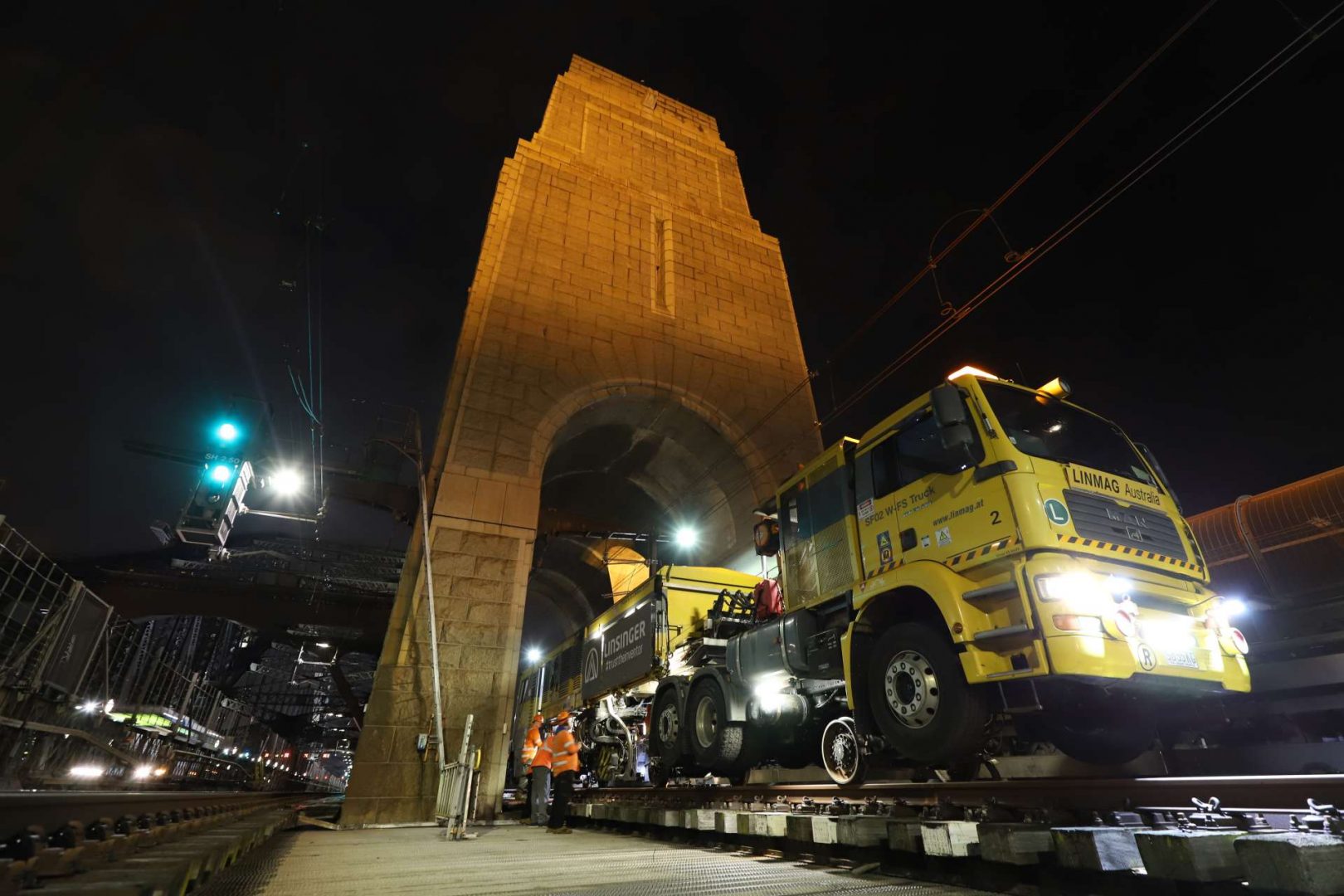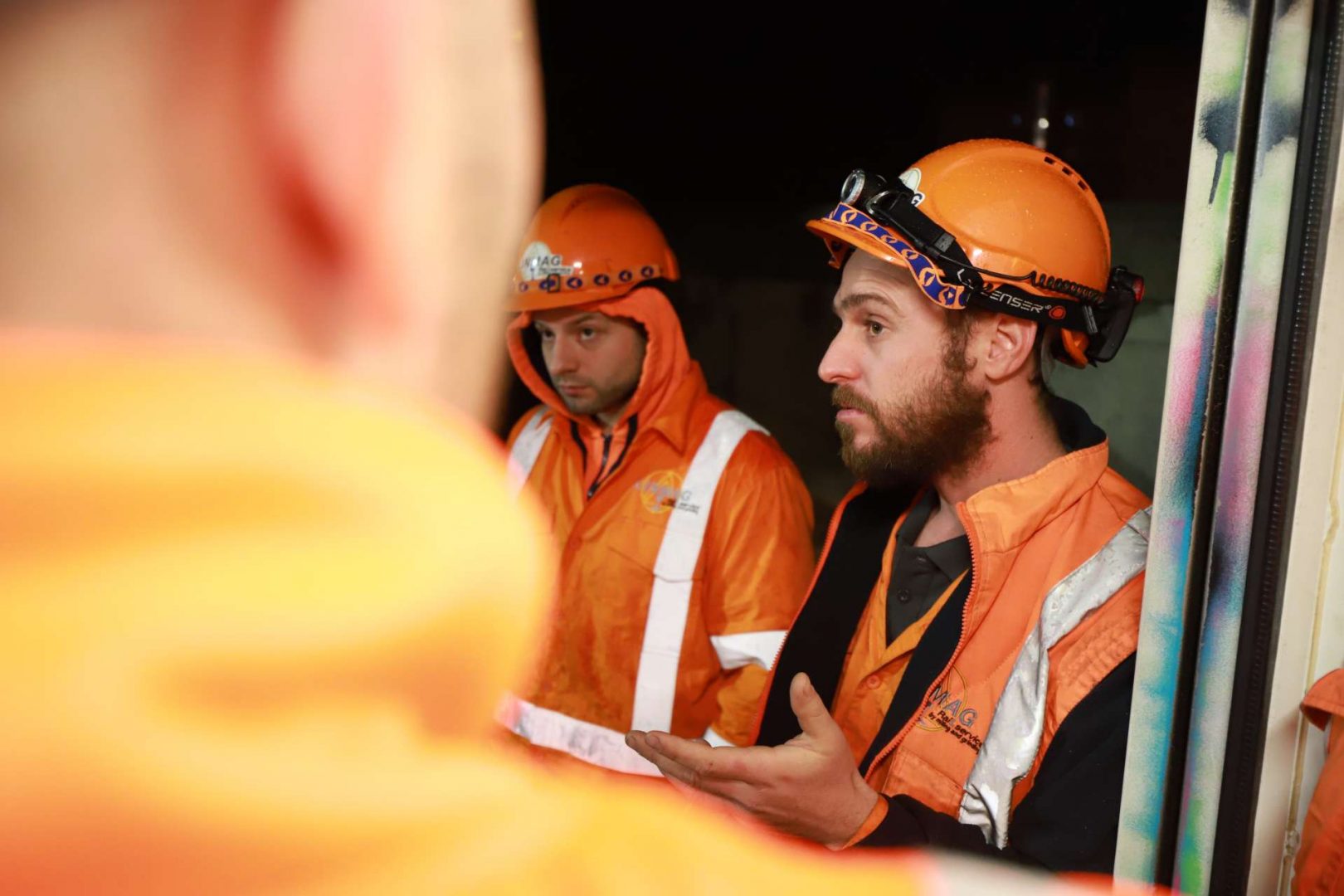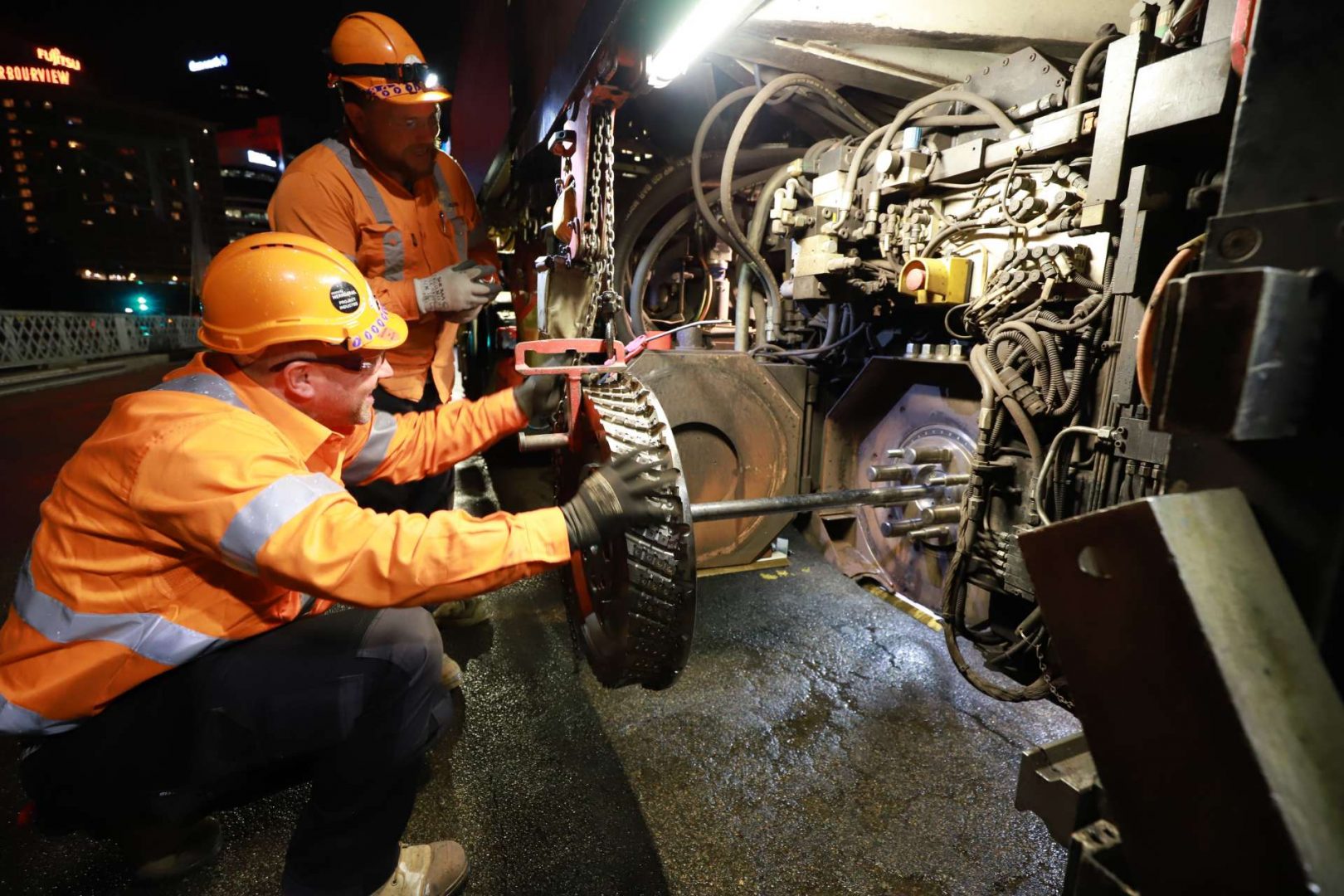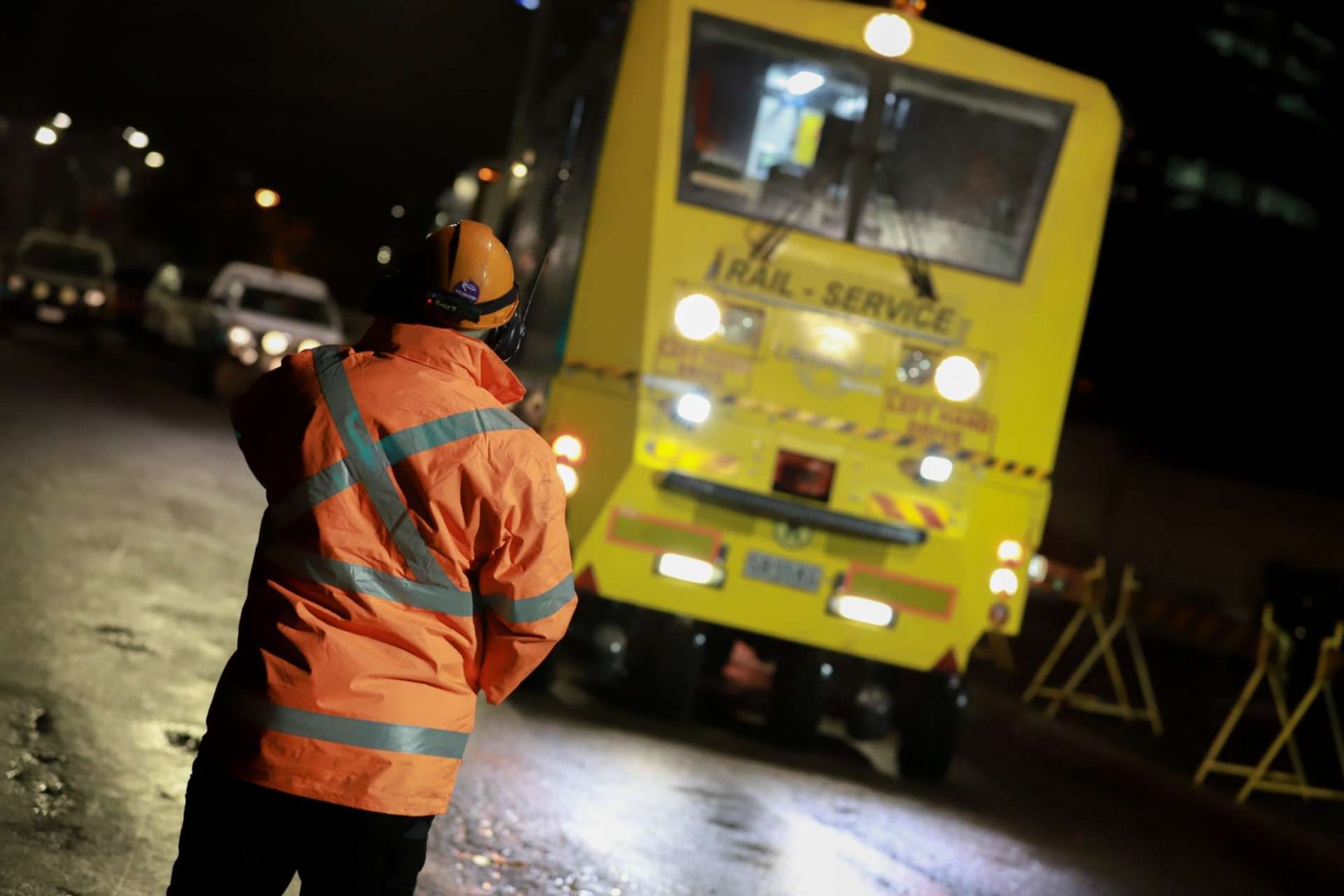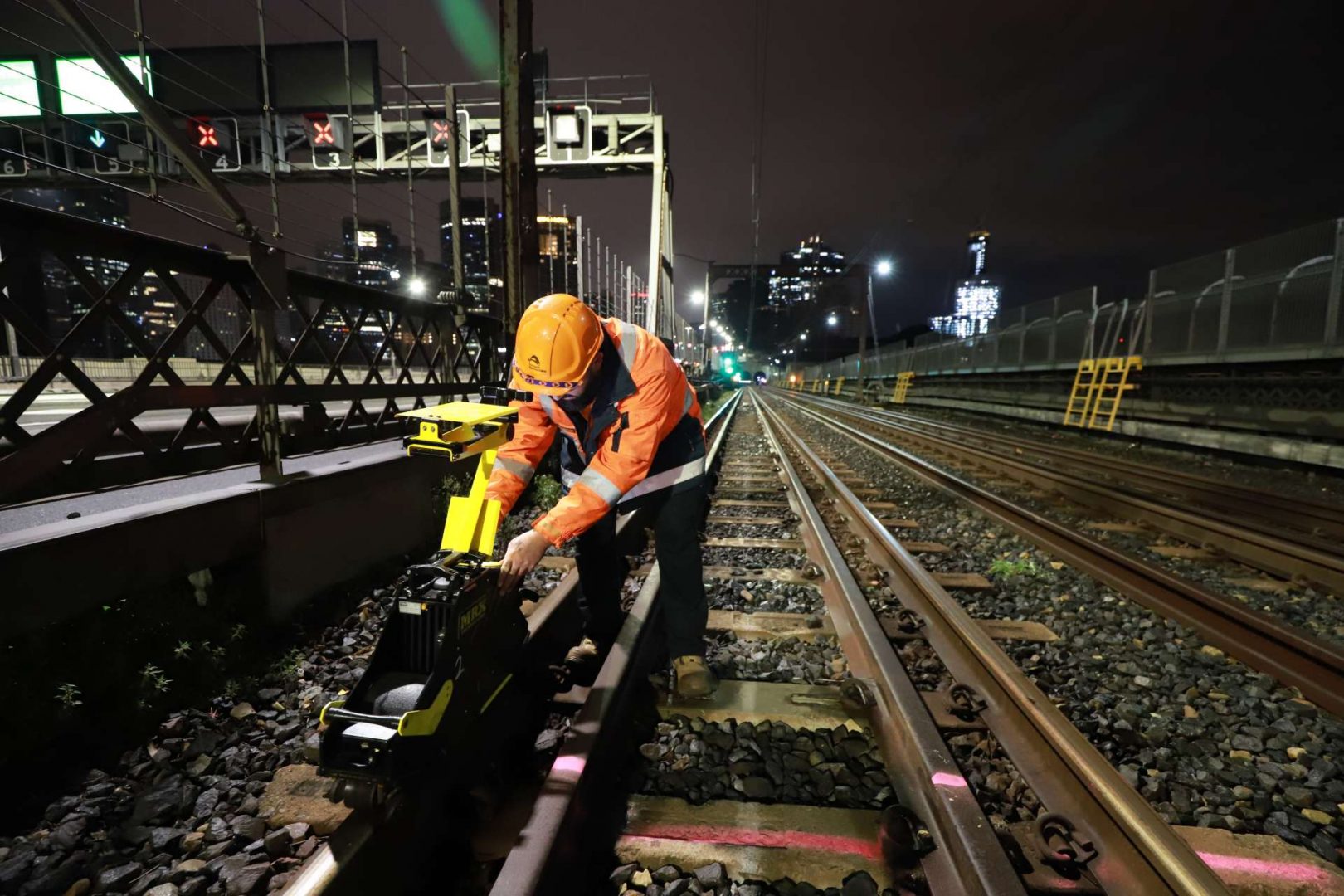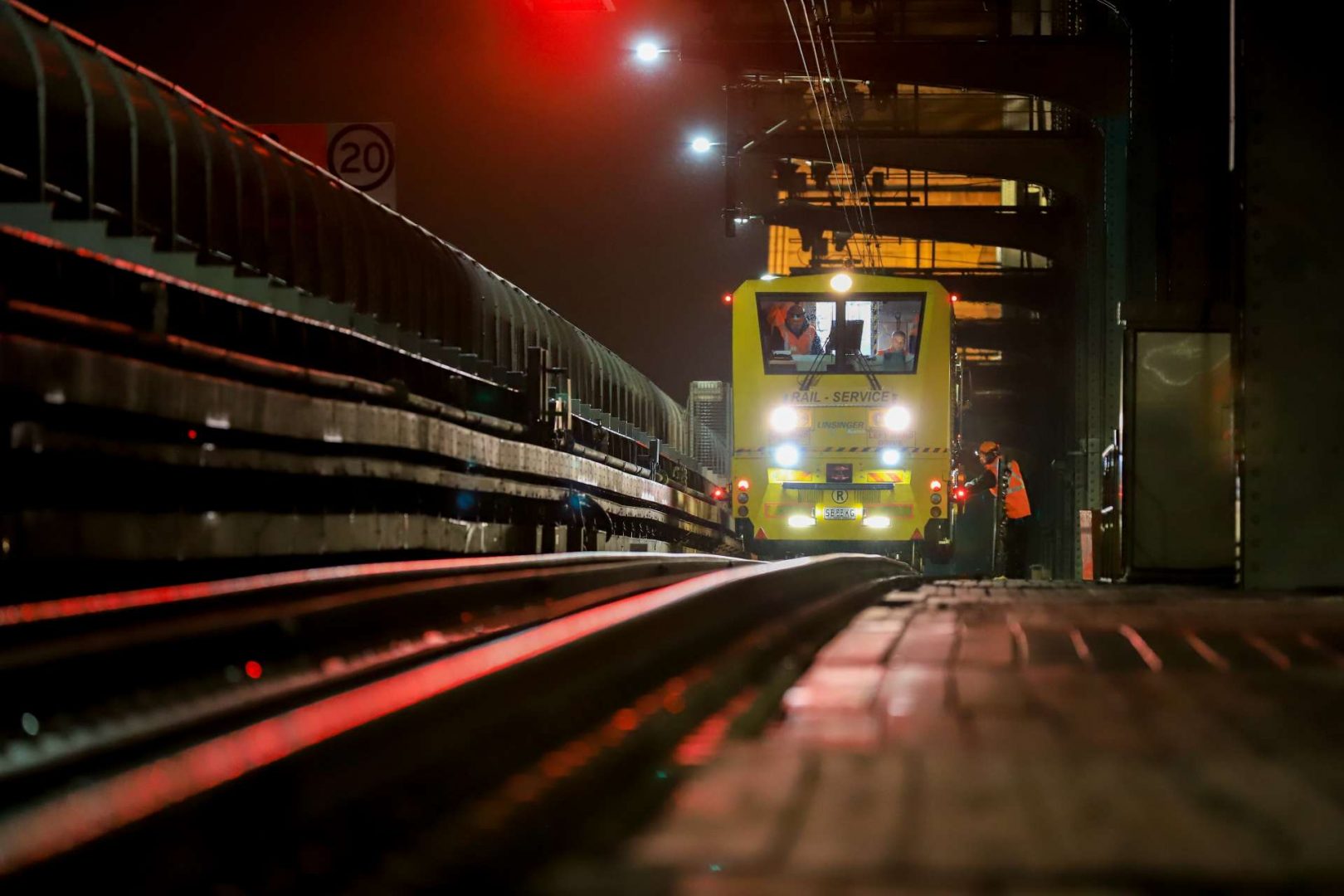About 1 million passengers use the Sydney Trains network daily and about one quarter travels across one of the most iconic track segments – the Sydney Harbour Bridge.
The bridge that was constructed in 1932 is listed in the New South Wales State Heritage Register. Whenever the rails needed maintenance no rail re-profiling was carried out so far and the rails were simply exchanged. Conventional rail grinding was condemned being too risky for the bridge due to fire danger (wooden sleepers, other flammable parts), potential damage to bridge structure and vehicles and because of environmental contamination of the waterway below.
For the first time in history LINMAG Rail Milling Service with its Linsinger Rail Milling Technology provided a solution to efficiently process the rails on the Sydney Harbour Bridge. Amongst other advantages of Rail Milling provides the key reason to allow milling on the Sydney Harbour Bridge was its non-fire risk and environmentally friendly process.
The bridge that was constructed in 1932 is listed in the New South Wales State Heritage Register. Whenever the rails needed maintenance no rail re-profiling was carried out so far and the rails were simply exchanged. Conventional rail grinding was condemned being too risky for the bridge due to fire danger (wooden sleepers, other flammable parts), potential damage to bridge structure and vehicles and because of environmental contamination of the waterway below.
For the first time in history LINMAG Rail Milling Service with its Linsinger Rail Milling Technology provided a solution to efficiently process the rails on the Sydney Harbour Bridge. Amongst other advantages of Rail Milling provides the key reason to allow milling on the Sydney Harbour Bridge was its non-fire risk and environmentally friendly process.
